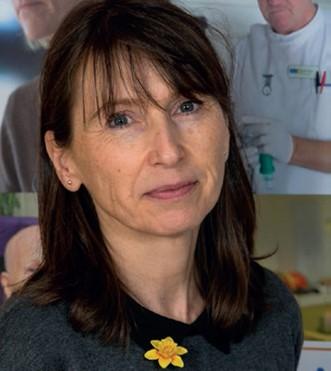Right care in the last year of life
Summary
For many people, lung disease will not be curable and symptoms, like breathlessness, pain and cough, can create increasing problems towards the end of life.
People want to hear from those who care for them about what they can expect in terms of quality of life and possible disease progression.
Right care in the last year of life
Giving patients choice
What’s the issue?
Many people find that they don’t get advice on the full range of treatments available at the end of their life. They want to have a say in what support they get and where they die, such as in their own home or in a hospital or hospice. But they don’t always have choice.
How do we solve it?
- We want patients and carers to know what support will be available as the end of their life approaches.
- We want patients to be supported to stay at home when appropriate.
- We want all health care professionals to be able to advise on basic end of life care.
Our vision for the future
We’ll see people approaching the end of their lives spending more time with their symptoms controlled at home, if appropriate, and feeling that their wishes have been respected.
Our plan for giving people choiceGiving patients choice
If your wish is to die at home, it is possible to make arrangements to enable you to do so. You will need the support of your family, carers and medical professionals. You must tell these people of your wish early on.”
Divya Malde, whose mother died at home
Right care in the last year of life
Improving health care professional awareness
What’s the issue?
Not all health care professionals caring for people with lung disease are aware of the range of therapies available at the end of life.
How do we solve it?
- All health care professionals should be able to offer basic end of life care advice, and also support patients to manage less obvious symptoms such as depression and anxiety
- Make better use of therapies that don’t use drugs.
Our vision for the future
We’ll see more people treated as individuals, and health care professionals maximising their patients’ comfort and wellbeing.
Oor plan for improving awarenessImproving health care professional awareness
Breathlessness can be a frightening and restricting symptom that many people with life limiting illness experience. We help them to understand this symptom and empower them by teaching strategies to cope with it more effectively.”
Kate Norman, Physiotherapist at St Christopher’s Hospice
Right care in the last year of life
Joining up services
What’s the issue?
People with lung disease are much less likely than other patients approaching the end of their lives to be offered care to meet their individual needs.
How do we solve it?
- We want health care professionals to work together to support patients as they approach the end of life. Joint clinics between specialist palliative services and respiratory teams would be a good start.
- We need to talk about end of life care earlier, so people living with a lung condition can influence decisions that will be made at a later stage
Our vision for the future
We’ll see people getting the care they want at the end of their life, because all health care professionals work together to meet their wishes.
Our plan for joining up servicesJoining up services

Dr Morag Farquhar, University of East AngliaPatients with lung disease rarely see specialists in palliative or end of life care, partly because predicting a prognosis is challenging in lung disease – so all health care professionals need knowledge in end of life issues”
